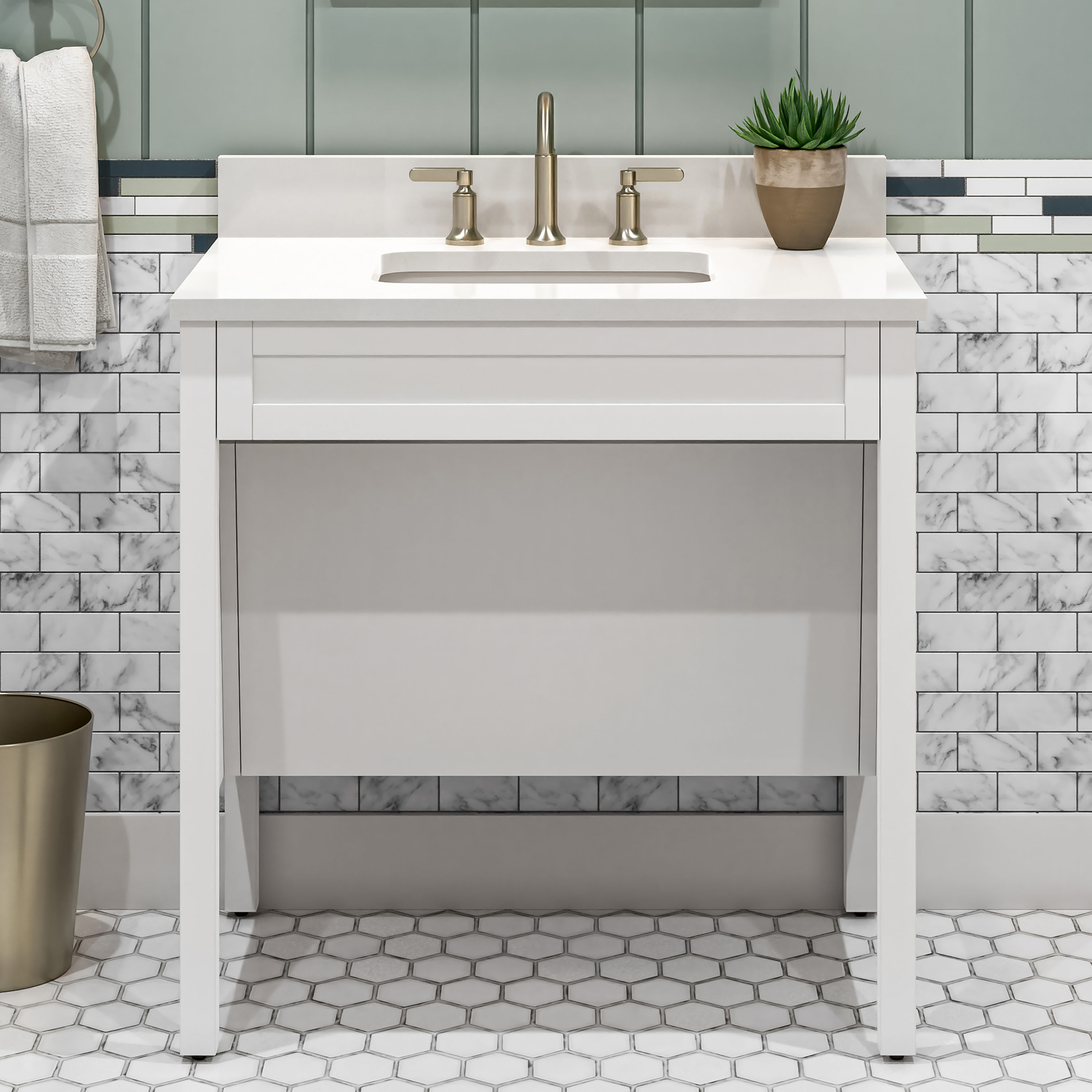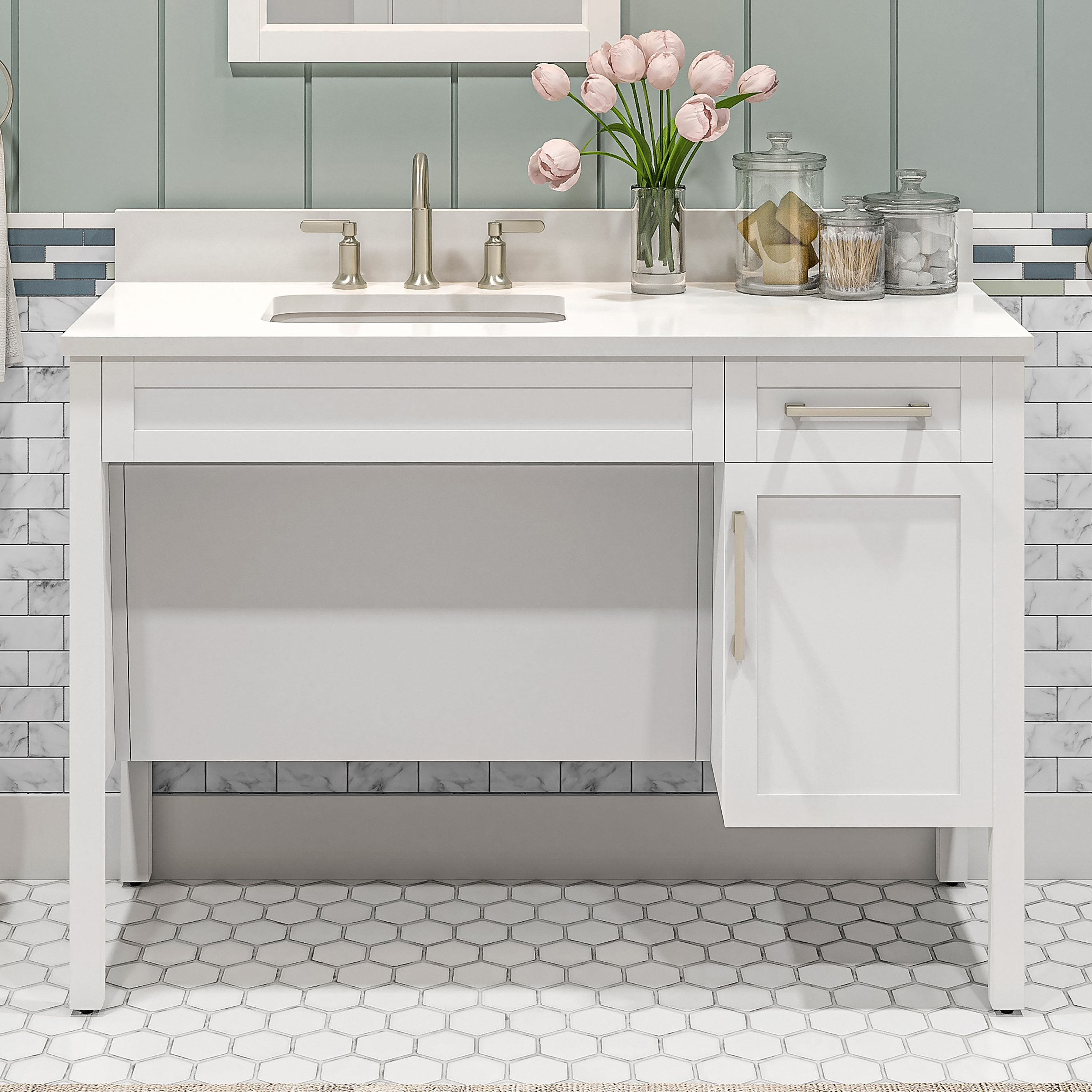ADA Compliance Requirements: Ada Compliant Bathroom Sinks And Vanities

Ada compliant bathroom sinks and vanities – The Americans with Disabilities Act (ADA) establishes accessibility guidelines for public and commercial spaces, including bathrooms. These guidelines aim to ensure that individuals with disabilities can safely and independently use bathroom facilities.
For bathroom sinks and vanities, the ADA specifies specific requirements regarding height, depth, and reach ranges to accommodate individuals of varying abilities.
Height Requirements
The ADA requires bathroom sinks to be installed at a height between 29 and 34 inches from the floor to the rim of the sink. This range allows individuals who use wheelchairs or have difficulty bending to reach the sink comfortably.
When it comes to creating an accessible bathroom, ADA compliant bathroom sinks and vanities are a must. These fixtures are designed to meet the specific needs of individuals with disabilities, ensuring that they can use the bathroom safely and comfortably.
If you’re planning to install a new bathroom sink or vanity, it’s important to make sure that it meets ADA standards. You can learn more about how to install pex pipe to bathroom sink by following this guide. Once you’ve installed your new sink or vanity, you can rest assured that it will meet the needs of all users.
Depth Requirements
The depth of the sink should be between 6 and 9 inches. This depth provides enough space for individuals to wash their hands and brush their teeth without having to lean over excessively.
Reach Requirements
The ADA also specifies reach ranges for bathroom sinks and vanities. The maximum forward reach should not exceed 48 inches from the back wall or fixture. The side reach should not exceed 24 inches from the centerline of the fixture.
These reach ranges ensure that individuals with limited mobility can access the sink and vanity without having to overextend themselves.
Selecting ada compliant bathroom sinks and vanities ensures accessible and comfortable bathroom spaces. However, occasional issues like a bathroom sink leaking from bowl can arise. These leaks require prompt attention to prevent water damage and maintain the functionality of your bathroom.
Nevertheless, ada compliant bathroom sinks and vanities offer durability and longevity, ensuring a hassle-free bathroom experience.
Importance of ADA Compliance
Ensuring ADA compliance in public and commercial settings is crucial for several reasons:
- It provides equal access to bathroom facilities for individuals with disabilities.
- It prevents discrimination and promotes inclusivity.
- It helps businesses comply with legal requirements and avoid potential lawsuits.
Design Considerations for ADA-Compliant Bathrooms

Designing ADA-compliant bathrooms involves creating accessible and stylish spaces that meet the specific needs of individuals with disabilities. This requires careful consideration of fixtures, finishes, and accessories, as well as adherence to universal design principles.
Fixture Selection
Fixtures should be chosen for their ease of use and accessibility. Toilets should be of a height that allows for comfortable use by individuals in wheelchairs, and should include grab bars for support. Sinks should be accessible from a seated position, and should have lever handles that are easy to operate. Showers should have roll-in access and grab bars, and should be equipped with adjustable showerheads.
Finishes and Accessories
Finishes and accessories should be chosen to enhance safety and accessibility. Non-slip flooring is essential to prevent falls, and grab bars should be installed in strategic locations to provide support. Mirrors should be placed at an accessible height, and towel bars should be easy to reach from a seated position. Lighting should be adequate to ensure visibility and safety.
Universal Design Principles
Universal design principles should be applied to create bathrooms that are accessible to all users, regardless of their abilities. This involves designing spaces that are adaptable and flexible, with features that can be adjusted to meet individual needs. For example, adjustable-height countertops and sinks allow for customization to suit different users, and accessible storage solutions provide convenient access to essential items.
Case Studies and Examples

Real-world examples of ADA-compliant bathroom sinks and vanities showcase the transformative impact of accessibility upgrades, enhancing usability and safety for individuals with disabilities.
Case studies demonstrate the challenges and successes encountered in implementing ADA-compliant bathroom designs, providing valuable insights for architects, designers, and building owners.
Successful Implementation of ADA-Compliant Bathroom Upgrades, Ada compliant bathroom sinks and vanities
- A hospital renovated its bathrooms to meet ADA standards, installing accessible sinks and vanities with adjustable heights, grab bars, and non-slip flooring. The upgrades significantly improved patient safety and independence.
- A university upgraded its dormitory bathrooms to comply with ADA regulations. The new designs included roll-in showers, accessible sinks with lever handles, and wider doorways to accommodate wheelchairs.
- A community center installed ADA-compliant bathroom fixtures in its public restrooms, ensuring equal access for individuals with disabilities to participate in community events.